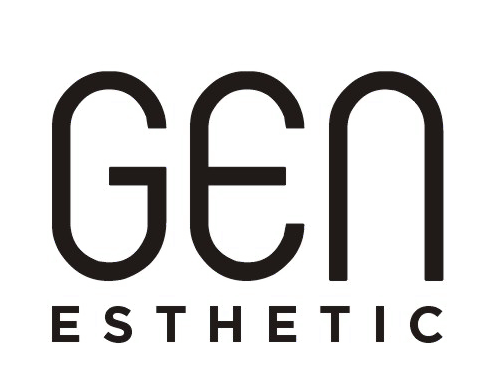Réduction mammaire
Réduction du sein à Genève
Une poitrine lourde et volumineuse peut entraîner divers problèmes de santé et affecter l’estime de soi. Parmi les inconforts fréquents, on retrouve les douleurs chroniques au niveau des épaules, du dos ou du cou, une mauvaise posture et des difficultés à pratiquer certaines activités physiques en raison du poids de la poitrine.
La réduction mammaire permet de réduire le volume des seins et de les repositionner plus harmonieusement sur la poitrine. Cette intervention est souvent associée à un très haut taux de satisfaction, car elle améliore significativement la qualité de vie des patientes, tant sur le plan physique que psychologique.
Contrairement à certaines interventions purement esthétiques, la réduction mammaire peut, dans certains cas, bénéficier d’une prise en charge par l’assurance maladie. Cette couverture dépend des critères médicaux spécifiques, comme la présence de douleurs chroniques ou de limitations physiques importantes. Une consultation médicale permettra d’évaluer si votre situation peut répondre aux critères d’éligibilité.
Réduction mammaire – en bref
| Durée du traitement: | 3-4 heures |
| Anesthésie: | générale |
| Hospitalisation: | 1-2 nuit |
| Traitement de suivi : | soutiens-gorge de compression pendant 4-6 semaines |
| Vie quotidienne: | appr. 3-5 jours |
| A considérer: | 4 semaines sans effort physique, environ 2 mois de renonciation à la formation du haut du corps, 3 mois de renonciation de bronzer / solarium avec poitrine non couverte |
| Nos tarifs: | à partir de 8’500 CHF |
Pour qui ?
Une réduction du sein est indiquée si vos seins sont trop lourds et trop volumineux, et ils
- causent douleurs aux épaules, au dos ou au cou,
- vous rendent mal à l’aise pendant certains activités physiques et ils vous empêchent de vous bouger libéramment,
- créent des difficultés à trouver des vêtements bien ajustés et ils diminuent votre confiance en vous et votre corps.
Pour envisager d’avoir une réduction mammaire dans les meilleures conditions possibles, il est important de présenter un poids corporel stable. En fait, les variations de poids peuvent modifier le résultat de la chirurgie, ainsi que l’excès de poids augmente le risque de complications.
Chaque condition individuelle sera discutée durant la consultation.
Procédure chirurgicale
La réduction mammaire consiste à éliminer du volume du tissu glandulaire, à réduire la taille de l’aréole et à remonter la position de celui-ci et du mamelon. Une asymmetrie initiale des seins peut être corriger pendant l’opération.
Dans son principe et ses considérations techniques, la réduction mammaire est similaire au lifting mammaire, sauf que l’intervention est d’ailleurs accompagnée d’une réduction importante de masse.
Il existent des nombreuses techniques opératoires dont le choix dépend du volume initial de votre poitrine et de votre morphologie. La technique choisie résultera dans un different type de la cicatrice (cicatrice autour de l’aréole et verticale ou en T inversé)
La procedure chirurgicale sera discutée en détail pendant votre consultation.
Cicatrice
La forme et la position de la cicatrice dépend de la technique chirurgicale choisie:
- cicatrice verticale : cicatrice autour de l’aréole et verticale, pour des réductions modérées du sein
- cicatrice T à l’envers : cicatrice autour de l’aréole, verticale et sous le sein, pour corriger des volumes importantes
Le processus de cicatrisation requiert un certain temps. Pendant les deux mois qui suivront l’intervention, vos cicatrices seront rouges. Puis, au fil des mois, elles blanchiront et deviendront de plus en plus discrètes tout au long des 12 mois suivants.
Anesthésie
Une réduction mammaire nécessite une anesthésie générale. Une consultation préopératoire avec le médecin anesthésiste aura lieu avant l’opération.
Hospitalisation
Une réduction du sein nécessite une hospitalisation de 1-2 nuits.
Avant la procédure
Après la 1ère consultation, vous aurez le temps d’y réfléchir. Ensuite, un 2ème rendez-vous sera organisé afin de répondre à vos questions supplémentaires, et fixer une date pour la chirurgie.
Une mammographie et/ou échographie mammaire datant depuis moins d’un an est nécessaire avant toute chirurgie.
Période postopératoire et convalescence
En quittant la clinique, vous auriez des pansements qui seront changés la semaine suivante pour la première fois lors de notre consultation. Vous êtes autorisé à prendre une douche environ 7 jours après la chirurgie. Vous devez porter un soutien-gorge compressif (sans fil, avec une large bande élastique, si possible, avec ouverture avant pour plus de confort) jour et nuit pendant 4-6 semaines.
Il n’est pas recommandé de conduire et de porter du poids (plus de 2-3 kilos) en quittant la clinique. La reprise de l’activité peut être envisagée après 2 semaines selon le type d’activité. Il faut attendre 6 semaines avant de faire du sport.
Prix
Nos tarifs sont à partir de CHF 8’500
Assurance
Dans certains cas une réduction mammaire peut être couverte par l’assurance maladie vu qu’il ne s’agit pas d’une intervention exclusivement esthétique.
